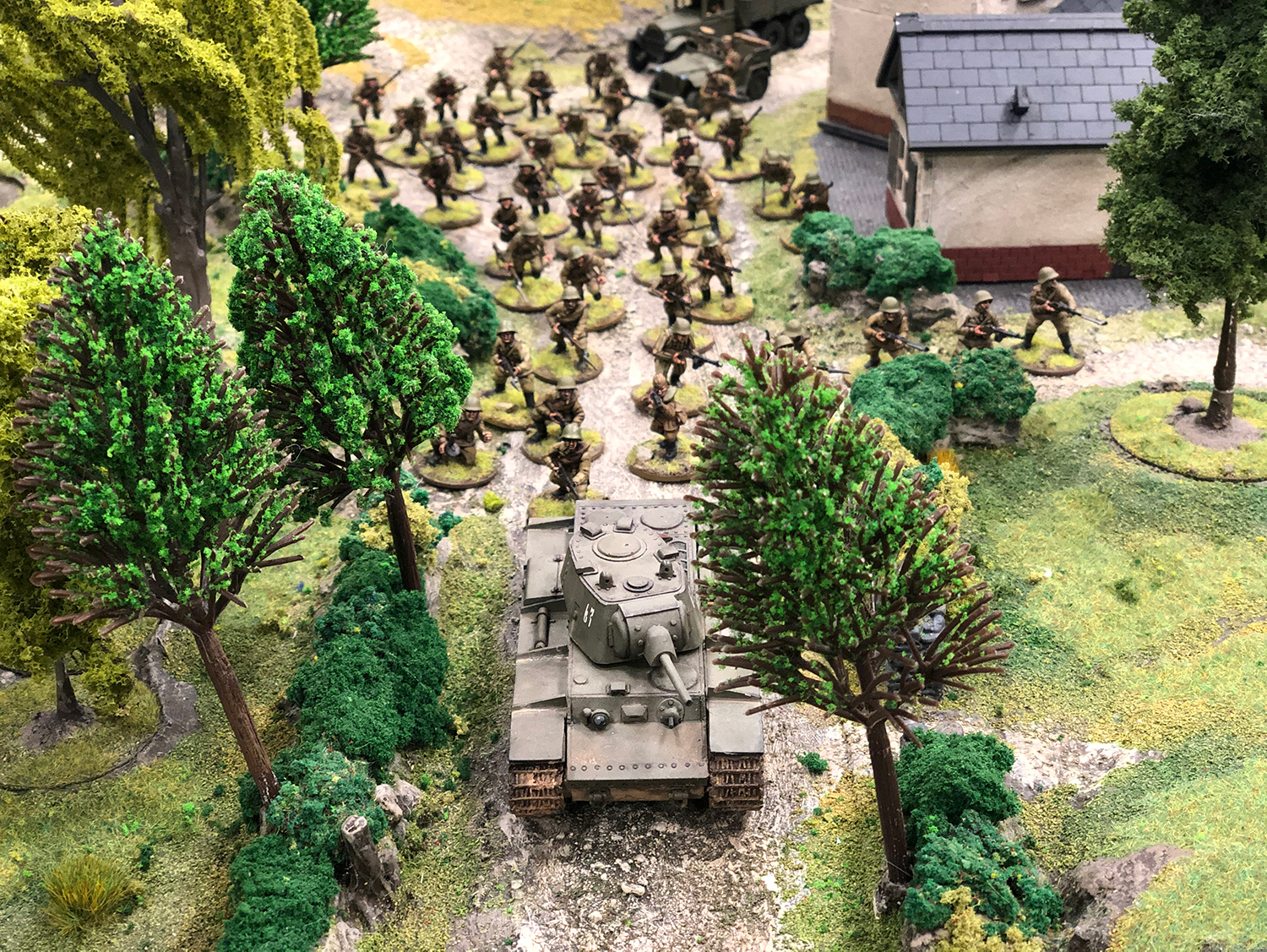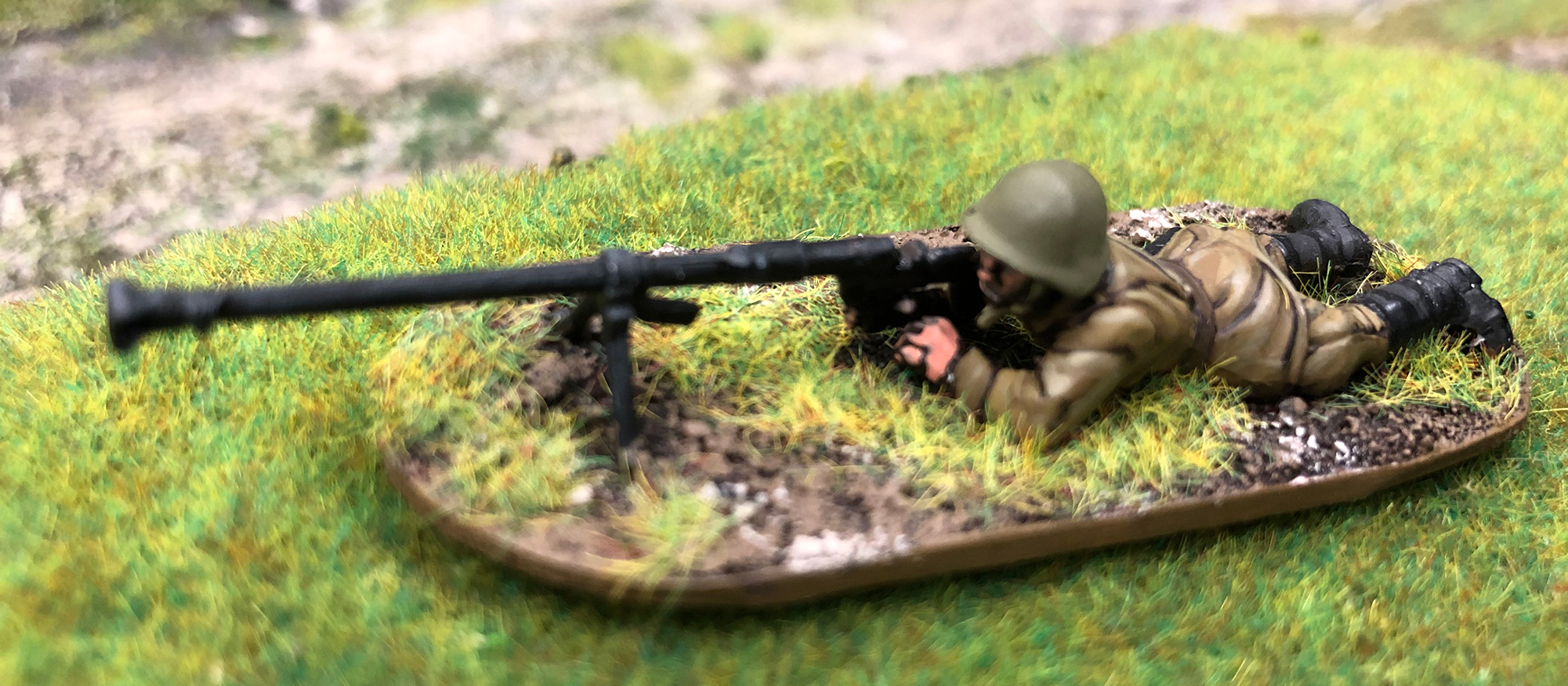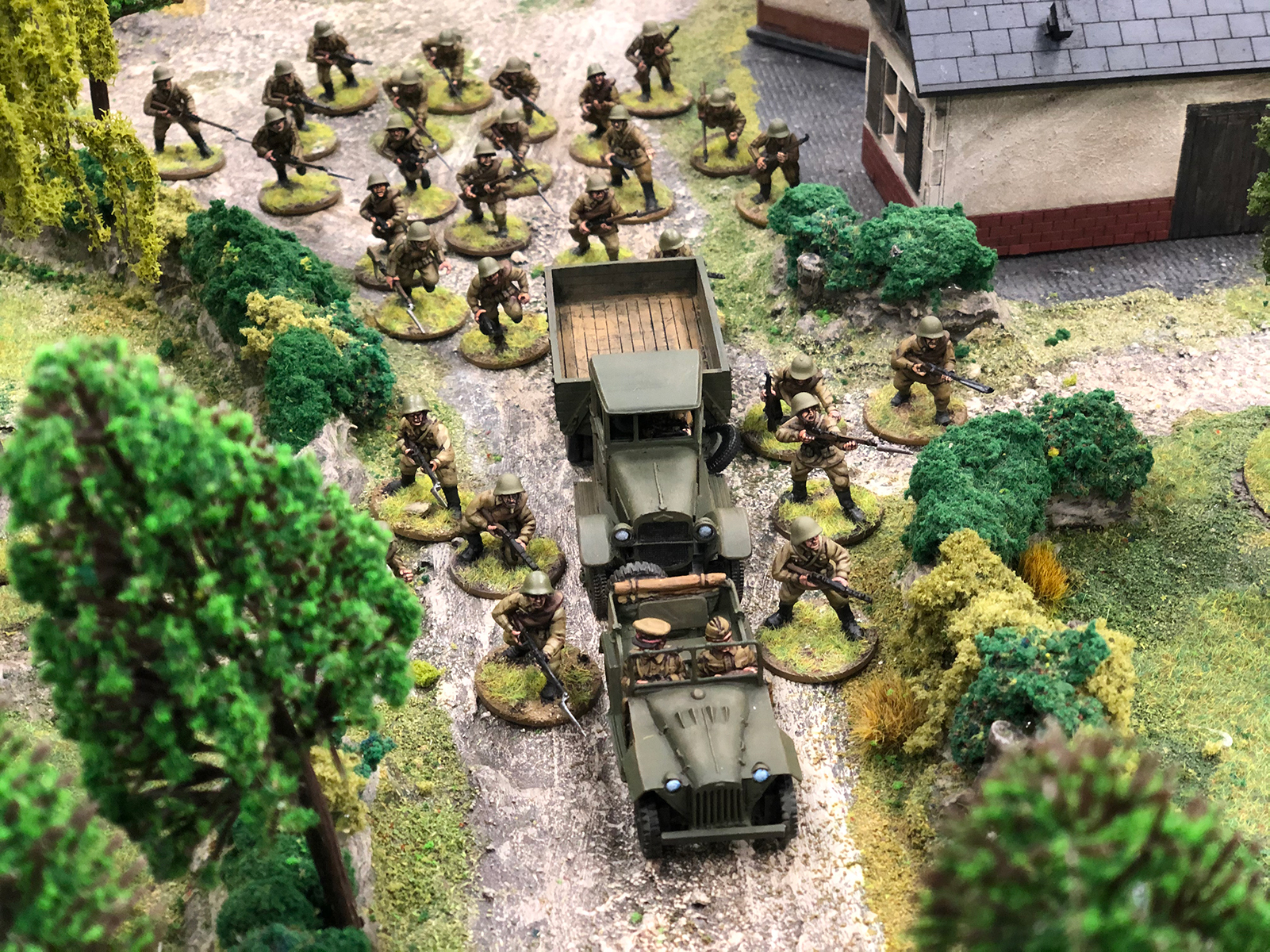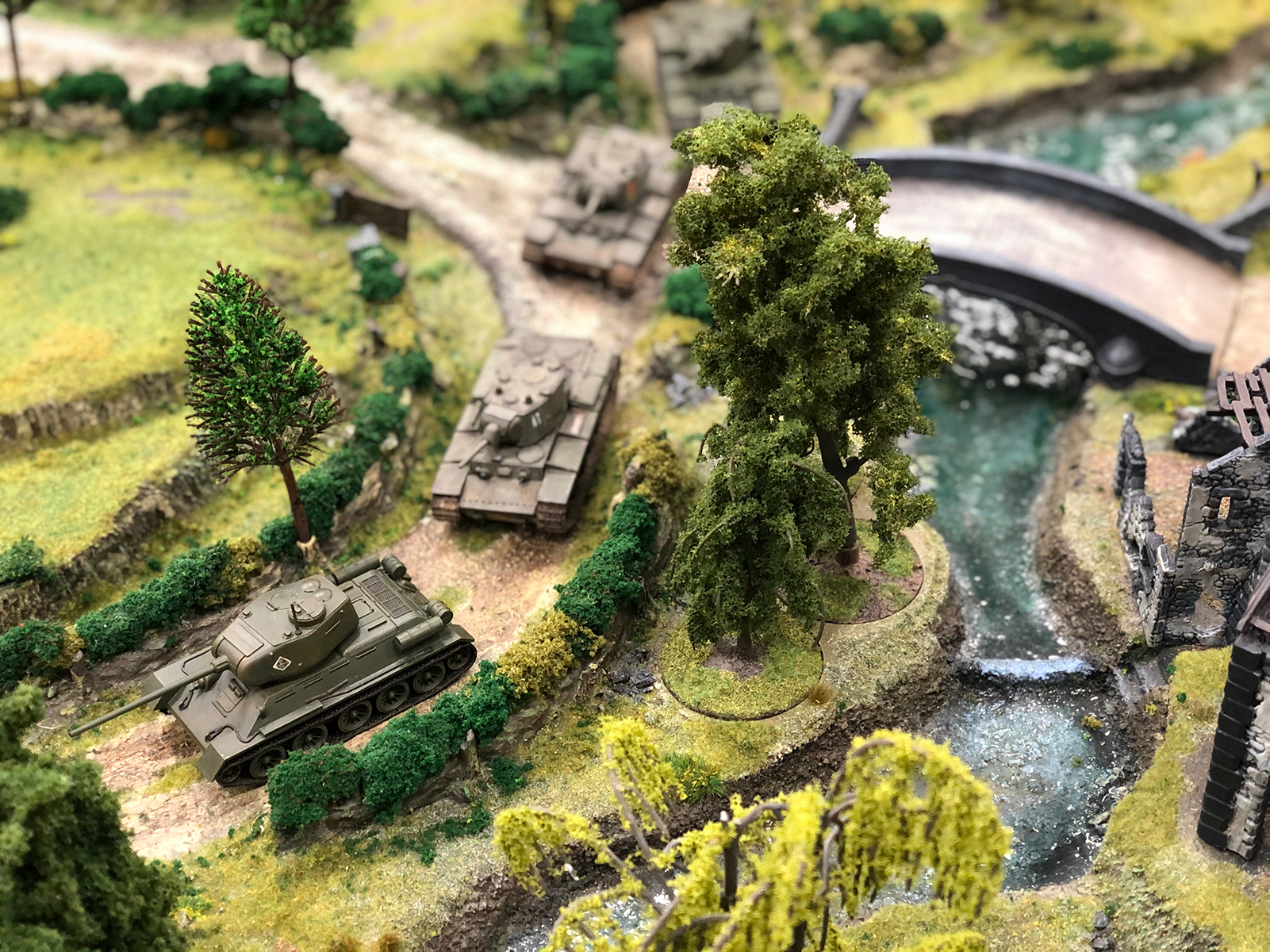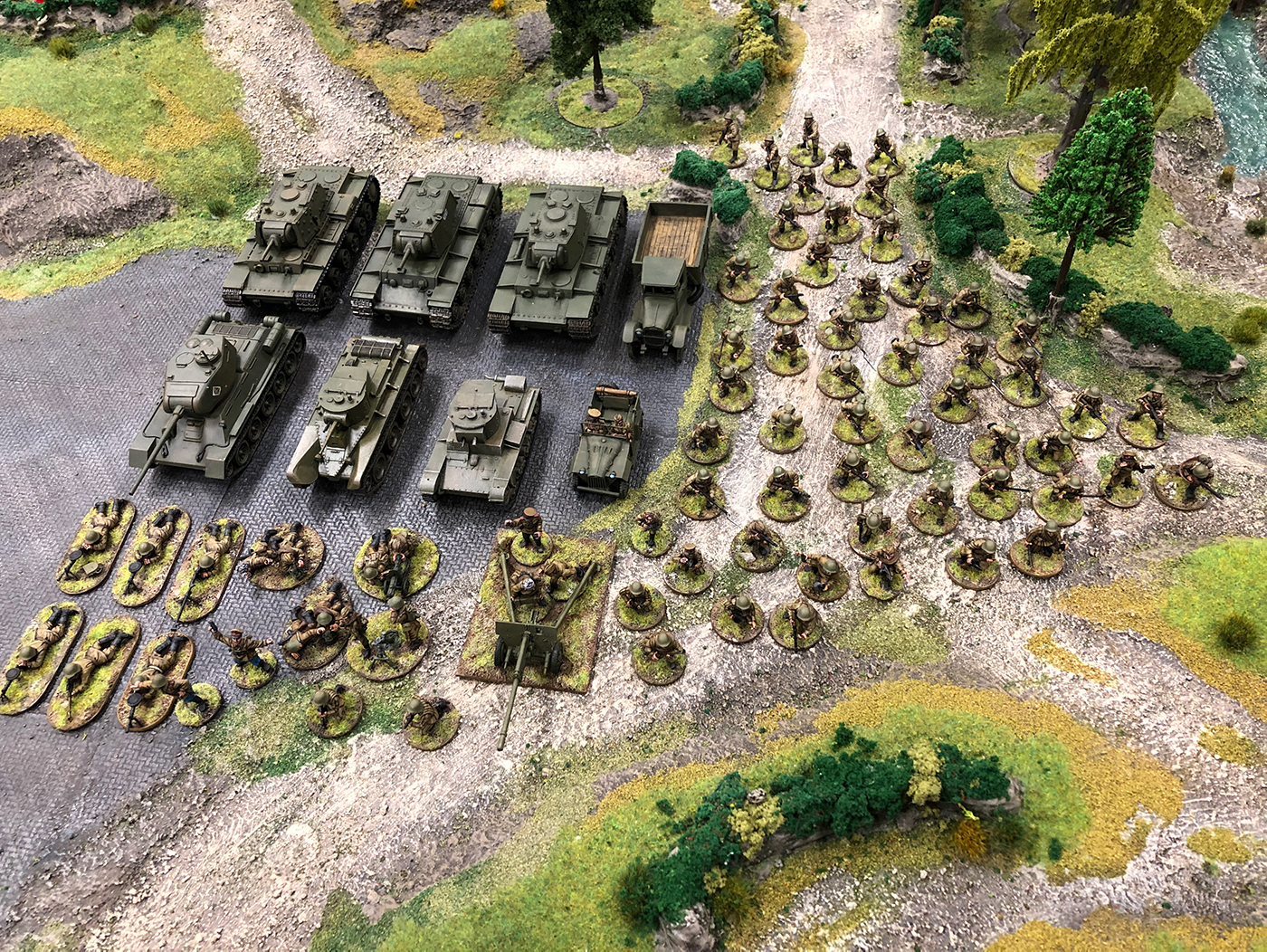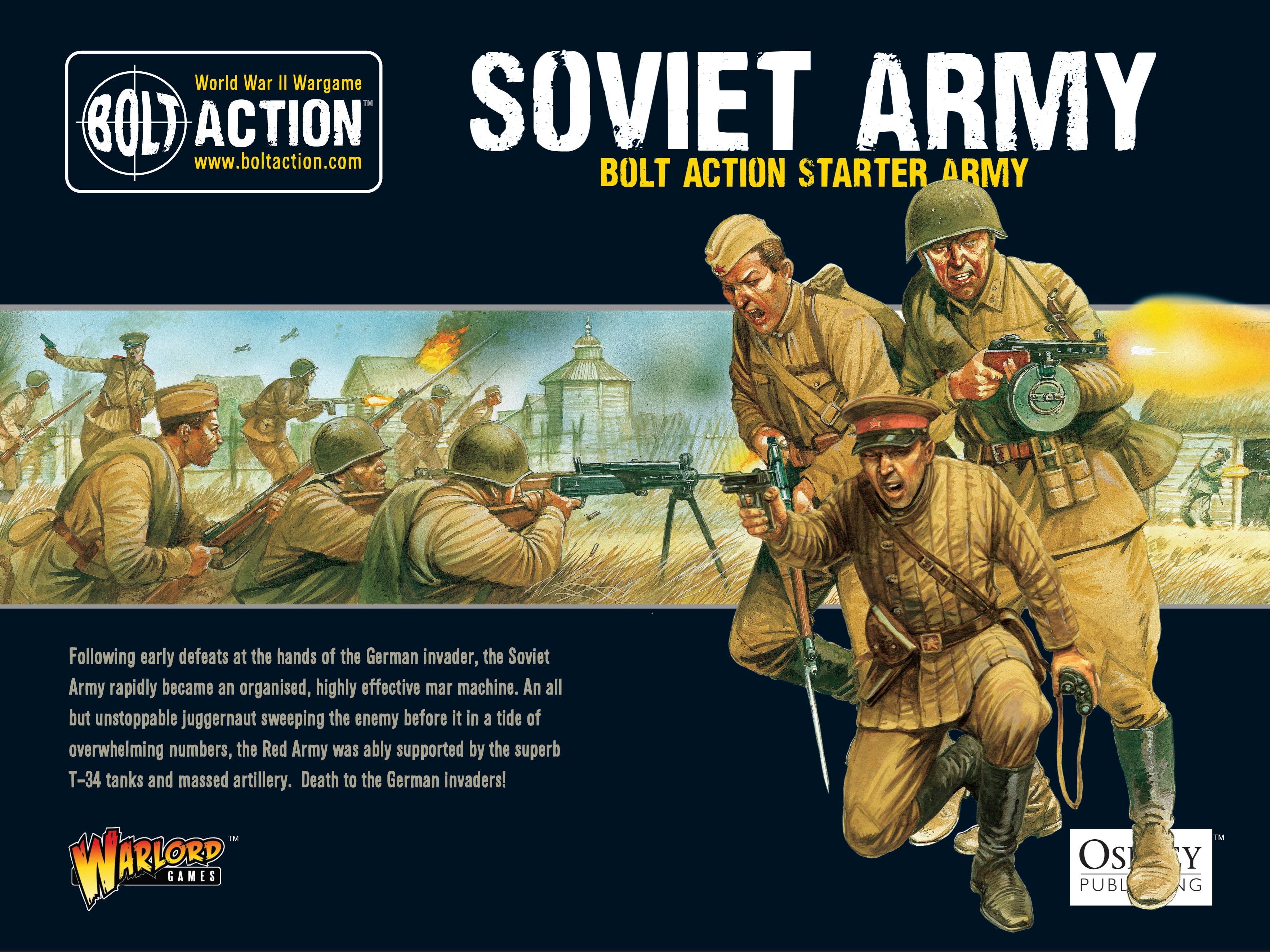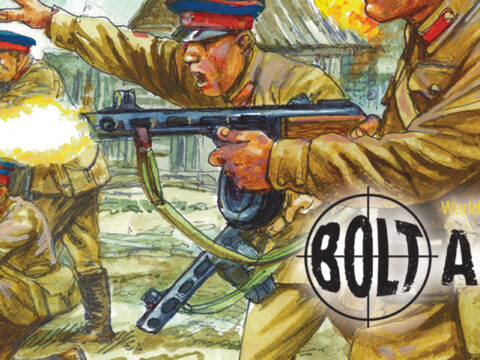We sat down with legendary game designer Rick Priestley, to give us the lowdown on his inspirations and thought processes for his Bolt Action Soviets…
Why Soviets?
I really liked the look of the plastic Russian infantry – nice designs and poses and the kit is jam-packed with weapon options. You can pretty much build whatever you want including light machine gun teams, snipers and officers and so on. You do get that variety baked right into the sprue – which is fantastic.
 The other reason I went for the Russians is that they were the first proper wargames force I had – based on the force in Charles Grant’s Battle Practical Wargames book (1971). Although nominally about WW2 wargaming, Grant encouraged a ‘use what you have’ approach which allowed for a mix of troops and equipment. In a way it was a sort of WW2-inspired ‘Imagi-Nation’, as such invented ‘Ruritanian’ type armies are called these days. I used Russians to make my ‘generic WW2 army’ because that’s what Charles Grant used; so I’ve always had a soft spot for them. I also like Russians because they don’t feel so theatre-specific as British or Germans. There’s an extent to which the exact details about the formations don’t matter so much. Perhaps that’s partly because those details are much less familiar. So, with Germans there’s an ‘early war/late war’ thing going on where the uniform and a lot of equipment is different. But for Russians you don’t get that so much for the infantry or even most of the artillery or support vehicles. Obviously there’s a lot of development with the tanks, but those are easier to swap out – BT5s for T34 85s and IS3s. Even then, the Russians often kept old kit going late into the war, perhaps deploying it with reserve units, so you have a lot of lee-way. Not to mention lend-lease stuff of course. Oh – also they tended not to use much by way of national or formation identification on their tanks – and mine have very little or none – although you can go to town and hand paint slogans all over them if you want!
The other reason I went for the Russians is that they were the first proper wargames force I had – based on the force in Charles Grant’s Battle Practical Wargames book (1971). Although nominally about WW2 wargaming, Grant encouraged a ‘use what you have’ approach which allowed for a mix of troops and equipment. In a way it was a sort of WW2-inspired ‘Imagi-Nation’, as such invented ‘Ruritanian’ type armies are called these days. I used Russians to make my ‘generic WW2 army’ because that’s what Charles Grant used; so I’ve always had a soft spot for them. I also like Russians because they don’t feel so theatre-specific as British or Germans. There’s an extent to which the exact details about the formations don’t matter so much. Perhaps that’s partly because those details are much less familiar. So, with Germans there’s an ‘early war/late war’ thing going on where the uniform and a lot of equipment is different. But for Russians you don’t get that so much for the infantry or even most of the artillery or support vehicles. Obviously there’s a lot of development with the tanks, but those are easier to swap out – BT5s for T34 85s and IS3s. Even then, the Russians often kept old kit going late into the war, perhaps deploying it with reserve units, so you have a lot of lee-way. Not to mention lend-lease stuff of course. Oh – also they tended not to use much by way of national or formation identification on their tanks – and mine have very little or none – although you can go to town and hand paint slogans all over them if you want!
Have you tackled a particular theme or time period?
I didn’t go for a specific period – other than WW2 – the figures are mostly the summer uniform with a few of those padded jackets. I wanted to keep the look consistent, so I’ve stuck with the plain helmets as much as possible – with officers in caps. I had a good nosey round some Russian WW2 re-enactment sites on the web – which are very good for detail on the colours of the different bits of kit. The colour of Russian uniforms varied a lot and most re-enactors go for a light khaki. Although you don’t hear about it a lot the Russians actually received a lot of American cloth via lend-lease arrangement, along with boots, so I didn’t feel too constrained when it came to the exact colours. In fact I chose British Uniform (Vallejo) as my stock uniform colour, but by the time you’ve highlighted it up I think it’s a credible representation.
What was the biggest challenge in terms of painting the miniatures?
I’m not sure I’d say there was a big challenge involved as such – they are nice figures to paint with good detailing that takes the paint well. I used a technique I’ve used before for painting Bronze Age ancients – but which I thought would work well for WW2 figures – and I’m happy with the result. I went for a ‘deep contrast’ approach – leaving plenty of dark colour underneath the highlights to accentuate the shapes – partly because I wanted to see if I could carry it off. My natural default painting style is a bit more blended than this, and as I worked at it I did tend to mix in elements of my blended technique. I still think it hangs together pretty well as an army.
The basic technique is: assemble and undercoat white, then apply a very dark brown slightly thinned down coat which serves as a base. The base coat won’t be solid – it acts as a guide coat over which you can apply the thinner layers of flesh and uniform colour. Getting the right consistency and colour was probably the trickiest bit. Anyway – over the base I’d apply the basic colour, leaving the dark brown as the defining base layer, then a lighter version of the basic colour as a highlight. I like to give the flesh a little ‘flesh wash’ and that helps define the features, and you can use the same to selectively shade around the uniform – it just adds a little warmth and texture to the colour and it’s fun to do.
Why did you pick the particular units in your army?
I don’t know that I did. I just assembled enough models to make basic infantry units, which in the case of Russians includes the odd unit equipped with SMGs. I like basic troops – that’s what the core of a real army is and that’s what the core of my force is too! Then I bought a Maxim (MMG) and a mortar and a Zis-3 AT gun – basic stuff – I don’t really go in for the fancy units and kit. John Stallard very kindly gifted me with a few pieces, including the Gaz jeep and the chap with a flamethrower as well as most of the KVs – of which I seem to have a great many! I don’t know exactly why that is – on the whole I prefer to use the BT (light tank) or T34 (85) at a push. I should get an earlier T34 – with the 76mm gun – the 85mm job is a bit OTT really.
Do you have a favourite unit?
Not really – the infantry get assembled into units on an ad hoc basis anyway so I don’t really think of them as units. The mortar teams are nice models and I rather enjoy popping away with those. I’m probably most fond of the Zis-3 model because that kit provided a bit of a challenge. The Zis-3 was what the Russians called a Divisional Gun – so a good all-round weapon rather than a dedicated AT gun or howitzer – the Germans certainly thought so because they used a lot of captured ones.
What’s next for your army?
Well we’ll see – I finished this force quite a while back and I’m pretty happy with it – it’s about the size of game I like to play. I wouldn’t mind adding an aeroplane – I have the odd British fighter but something more obviously Russian would be welcome!
Fancy assembling your own Russian force? Look no further than this handy guide.
One of the best places to start is undoubtedly the Soviet Starter Army:
Offering a significant saving from buying the contents individually and providing everything you need to get a 1000 point Soviet Army up and running. The combination of weapon sprues and infantry sprues allow you a phenomenal range of customisation options, allowing you to create all manner of weapons teams and HQ units for your force.
Along with the mass of 66 infantry, the inclusion of the highly dependable T34/85 medium tank bulks out the army and gives it the tools to deal with any situation on the battlefield.
This army deal is made up of the following
- 1x plastic T34/85 medium tank
- 1x Soviet 82mm mortar team
- 1x metal Soviet officer (random selection)
- 1x metal Medic
- 8 plastic Soviet infantry sprues
- 5 plastic Soviet weapon sprues

